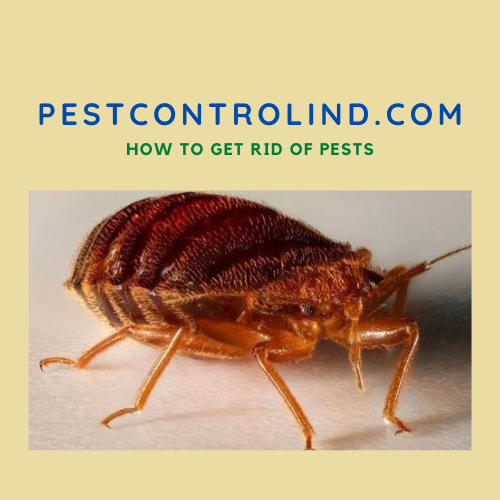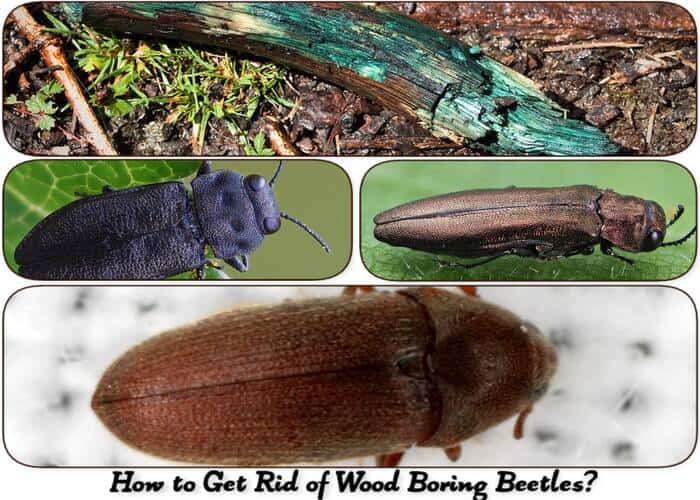How to get rid of wood boring beetles? What are the best methods to protect against these xylophagous insects? How to prevent their appearance? Are wood-boring beetles dangerous? And finally signs of wood-boring beetles?
I. What are wood boring beetles?
Wood boring beetles are large wood-eating insects belonging to the long-horned beetle family. They have an elongated black body except for the reddish-brown tip.
They measure between 5 to 11 cm and their antennas are longer than their bodies, 11-12 cm long.
As with all long-horned beetles, the males are smaller than the females. Wood boring beetles larvae are white and fleshy, measuring up to 10 cm long when mature.
These insects are found throughout the world but are more numerous in the tropics. They invade and damage wooden furniture as well as construction and decorative wood inside buildings.
II. How to get rid of wood boring beetles?
Here are the different methods and steps to treat wood borers while trying to save the affected furniture.
1. How to detect wood borers
There are several things you can do to detect wood borers, even though it is notoriously difficult for a non-professional to recognize their presence. These include:
- Hollow areas can sometimes be seen through small cracks in the wood. This sign can develop within the first year of the attack, but in most cases, it appears in the second year following the attack.
- Small oval holes of 8 to 10 mm in width that are visible on the surface of wooden frames (beams, frames, door towers…);
- Whitish substances, often in powder form, are mainly wood digested by the beetles.
- Other signs are bug corpses scattered around the area, a hollow sound in the wood when you lightly tap on it, chewing noises coming from the wood, holes in the floor or on the wood, etc.
2. brushing
This technique consists of anointing the infested object with an appropriate product using a sponge or a brush.
A good staining product will ensure the long durability of the wood and will also offer good protection and get rid of wood boring beetles for a long time.
You should apply two or more coats, with the final coats applied before the previous coats have dried.
Use a large brush to do this. The liquid to be used for the staining should be poured onto the wood in a fluid layer, not brushed on like paint.
It is essential that all surfaces be treated. The deeper the preservative penetrates into the wood, the more effective it is.
3. injection treatment
Injection treatment is one of the oldest methods of treating wood boring beetles. It consists of injecting insecticides into holes or dry wood infested by wood boring beetles.
The main purpose of this method of treating beetles is to get the chemicals to exactly where the beetles are.
An insecticide is injected into small holes drilled through any wood surface in the beetle galleries, delivering the treatment directly to the pest population.
Once it reaches the wood, the chemical spreads and permeates the areas where it is injected.
This is the simplest and most direct method of treatment. The amount of drilling required and the effectiveness of this treatment depend on the chemical used and the nature of the infestation.
Most chemicals will remain active in the wood after treatment to counteract resurgent colonies.
4. heat shock
Heat shock treatment has developed considerably in recent years and continues to develop as an effective treatment process for wood boring beetles.
In heat shock treatment, the infested wood after a good cleaning is simply put into a freezer.
When performing a heat shock, you have to take into account the different settings: the beetles and their larvae cannot survive when the temperature is below 0°C.
However, some Capricorns can slow down their development to survive when the temperature is below 15°C. Think about it.
5. anoxia
Anoxic treatment is a long-standing, reliable, and widely used method of preserving wooden objects against wood borers.
You should enclose infested wood in an airtight cover or equivalent container for 1 to 3 weeks in atmospheres that contain very little oxygen. Wood borers succumb most effectively to anoxia at less than 0.1%.
Note that wood borers are the most tolerant of anoxia, requiring longer exposures.
Anoxia can be performed at room temperature (20°C) in a clear film or metalized film plastic bag.
Long-term storage in anoxia bags provides considerable protection against reinfestation and other deleterious agents such as airborne contaminants, water, humidity variations, etc.
6. dipping in a curative solution
In dip treatment, the wood is simply submerged in the preservative solution and left to soak for a few hours or days.
Easily treated wood can absorb enough preservatives and be sufficiently well penetrated during treatment to provide a high degree of protection against bark beetles.
The advantage of dip treatment is that it is relatively simple and moderately expensive.
It can be used with a variety of preservatives to meet different requirements for color, cleanliness or other properties.
7. diatomaceous earth
Apply diatomaceous earth to any infested wood. You should apply it evenly and visibly with an applicator to ensure that your application is uniform and not just a waste.
Although diatomaceous earth is safe and non-toxic, be sure to wear a mask, eye protection, and possibly gloves.
Just to keep the product out of your eyes and to prevent you from inhaling a massive amount when applying it.
III. Prevention from wood boring beetles
Untreated raw wood can be attacked by long-horned beetles; it can also carry the larvae of these insects.
When using unfinished wood in and around your home, make sure it is either kiln-dried, treated, or kept outside and away from the house when stored.
Do not store wood furniture outside, near trees, or in sheds, barns, etc.
You should reduce the humidity inside your home by using dehumidifiers and ensuring that crawl spaces are properly ventilated.
When buying wooden furniture or raw wood, check for strange holes (a sign that adult beetles may have escaped).
Suspect new or old wooden furniture can also be fumigated before being brought into your home.
Use seasoned lumber when building inside your home.
The wood used inside your home should be treated with paint, stain, or varnish, as most Capricorns will not invade treated wood.
Remove fallen trees, logs, and stumps from your property.
IV. are wood-boring beetles dangerous
Xylophagous insects including wood boring beetles are a very serious threat to your home and the woods that compose it. The risks are such that the very structure of the construction can collapse if no wood treatment is applied.
It is their larvae that devour the wood, living inside for years until they metamorphose into adults ready to reproduce.
V. signs of wood-boring beetles
The first signs of a wood-boring insect infestation appear after several years.
- Holes in the wood.
- Sawdust or wood dust: when the insects come out of the wood, they drill a hole.
- dead insects.
- Live insects: they can come out of the wood between May and October.

